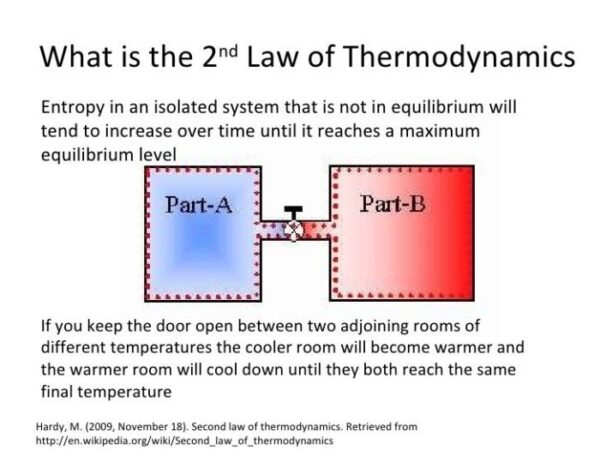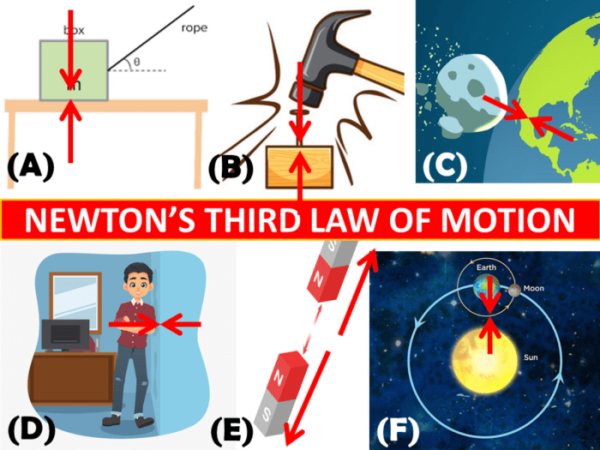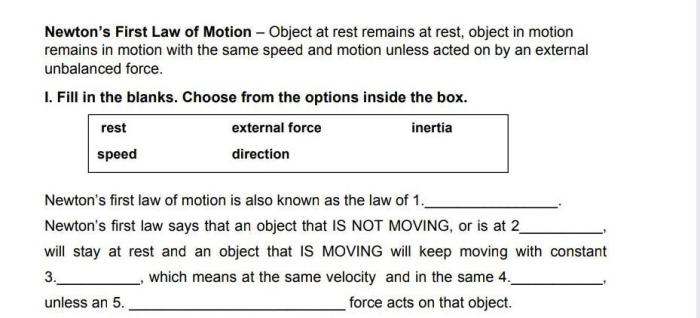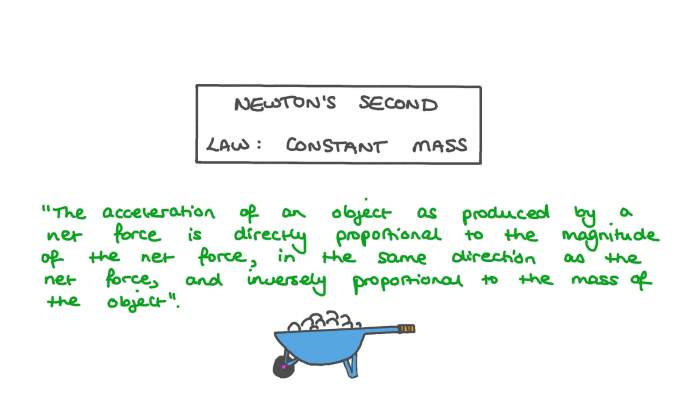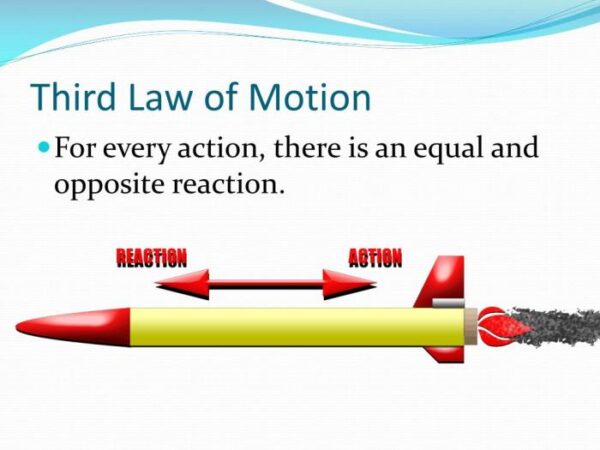
What is second law of thermodynamics – What is the Second Law of Thermodynamics sets the stage for an exploration of one of the most fundamental principles in physics, governing the flow of energy and the direction of change in the universe. This law, often described as the “arrow of time,” dictates that the entropy of a closed system always increases, leading to a gradual dispersal of energy and a tendency towards disorder.
The Second Law has far-reaching implications, influencing everything from the efficiency of engines to the evolution of the universe. Understanding this law provides a framework for analyzing and predicting how energy transforms and how systems behave over time.
Introduction to the Second Law of Thermodynamics
The Second Law of Thermodynamics is a fundamental principle in physics that governs the direction of energy flow and the tendency of systems to move towards a state of greater disorder. It essentially states that the total entropy of an isolated system can never decrease over time.
Entropy and Its Role in the Second Law
Entropy is a measure of disorder or randomness within a system. The higher the entropy, the more disordered the system. The Second Law states that the entropy of a closed system will always increase over time, meaning that the system will become more disordered. This increase in entropy is a natural consequence of the tendency for energy to disperse and become less concentrated.
Everyday Occurrences Illustrating the Second Law
The Second Law of Thermodynamics is evident in many everyday occurrences. Here are some examples:
- Heat Transfer: When a hot object is placed in contact with a cold object, heat will flow from the hot object to the cold object until they reach thermal equilibrium. This transfer of heat increases the entropy of the system, as the energy becomes more evenly distributed.
- Melting Ice: When ice melts, it transitions from a more ordered solid state to a less ordered liquid state. This change increases the entropy of the system, as the water molecules become more randomly distributed.
- Diffusion: When a drop of ink is placed in a glass of water, the ink molecules will gradually spread throughout the water. This diffusion process increases the entropy of the system, as the ink molecules become more randomly distributed.
Key Concepts and Principles
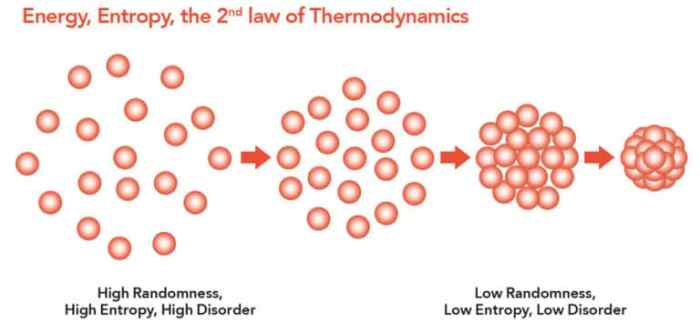
The Second Law of Thermodynamics is a fundamental principle in physics that governs the direction of energy transfer and the efficiency of energy conversion processes. It has profound implications for understanding the behavior of systems at the macroscopic level and has far-reaching applications in various fields, including engineering, chemistry, and biology. This section delves into the key concepts and principles underlying the Second Law, exploring its different formulations, its relationship with irreversibility, and its implications for heat flow.
Different Formulations of the Second Law
The Second Law of Thermodynamics is often expressed in different, but equivalent, formulations. These formulations, while seemingly different, all convey the same fundamental principle.
- Clausius Statement: This statement focuses on the impossibility of a spontaneous transfer of heat from a colder body to a hotter body without external work being done. In other words, heat naturally flows from a hotter object to a colder object. For example, if you place a hot cup of coffee on a table, the coffee will gradually cool down as heat flows from the coffee to the cooler air and table.
- Kelvin-Planck Statement: This statement emphasizes the impossibility of a cyclic process whose sole effect is the conversion of heat entirely into work. This implies that no heat engine can achieve 100% efficiency, as some heat must always be rejected to a lower temperature reservoir. A real-world example is a steam engine, where heat from burning fuel is used to produce steam, which drives a turbine to generate work. However, some heat is always lost to the environment, preventing the engine from converting all the heat energy into work.
Irreversibility and the Second Law
The Second Law is intrinsically linked to the concept of irreversibility in physical processes. Irreversibility refers to the fact that certain processes, once initiated, cannot be reversed without leaving some change in the environment. This irreversibility is a direct consequence of the Second Law. For example, if you drop a ball on the ground, it will bounce back up but not to its original height. The energy lost during the impact is dissipated into the environment as heat, making it impossible to reverse the process completely.
Heat Flow and the Second Law
The Second Law dictates the direction of heat flow. Heat always flows spontaneously from a region of higher temperature to a region of lower temperature. This principle has wide-ranging implications in various applications, such as heat transfer in engines, refrigerators, and heat exchangers. For instance, in a refrigerator, heat is extracted from the cold interior and transferred to the warmer environment outside. This process requires work to be done by the refrigerator, highlighting the fact that heat flow against the temperature gradient is not spontaneous.
The Second Law and the Universe
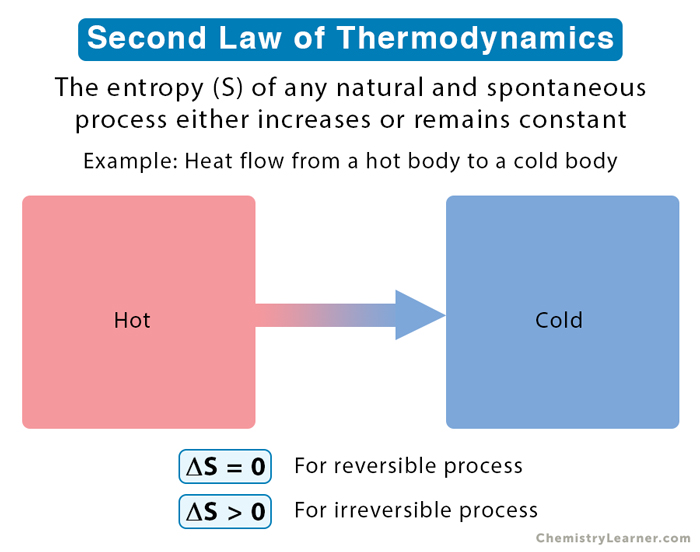
The Second Law of Thermodynamics, with its implications for entropy, has profound consequences for the evolution of the universe. It paints a picture of a universe moving towards a state of maximum disorder and homogeneity, a concept known as “heat death.” This section delves into the implications of the Second Law for the universe’s ultimate fate.
Heat Death, What is second law of thermodynamics
The Second Law implies that the universe is constantly moving towards a state of maximum entropy, where energy is uniformly distributed and no further work can be done. This scenario is often referred to as “heat death,” a state where the universe reaches thermal equilibrium, with no temperature differences, and all processes cease. The universe would become a vast, cold, and lifeless expanse.
“Heat death is a theoretical state in which the universe reaches a state of maximum entropy, where all energy is uniformly distributed, and no further work can be done.”
The Ultimate Fate of the Universe
While the Second Law suggests a universe inevitably heading towards heat death, there are different perspectives on the universe’s ultimate fate. Some scientists believe that the universe will continue to expand indefinitely, leading to a gradual cooling and eventual heat death. Others theorize that the universe may undergo a “Big Crunch,” where gravity eventually overcomes expansion, causing the universe to collapse back upon itself, potentially leading to a new Big Bang.
- Expansion and Heat Death: This scenario envisions the universe continuing to expand, with galaxies moving further apart. As the universe expands, it cools, and the energy becomes more evenly distributed, leading to a state of maximum entropy. This scenario aligns with the Second Law, where the universe reaches a state of thermodynamic equilibrium, with no temperature differences, resulting in a cold and lifeless universe.
- Big Crunch: This scenario suggests that the universe’s expansion will eventually slow down and reverse, due to the force of gravity. As the universe contracts, it heats up, potentially leading to a “Big Crunch,” where all matter collapses into a singularity, similar to the state before the Big Bang. This scenario would result in a cyclic universe, with periods of expansion and contraction, potentially leading to new Big Bangs.
Misconceptions and Common Errors
The Second Law of Thermodynamics, while a fundamental principle in physics, is often subject to misinterpretations and incorrect applications. It is crucial to understand the law accurately to avoid misleading conclusions and to apply it correctly in various scientific and technological fields.
Common Misconceptions about the Second Law
Understanding the Second Law accurately is essential to avoid incorrect interpretations and applications. Here are some common misconceptions:
- The Second Law implies that everything in the universe is constantly becoming more disordered: This is a common misconception. The Second Law states that the entropy of a closed system always increases or remains constant, not that everything in the universe is becoming more disordered. In fact, local areas of order can arise, but this always comes at the cost of increased disorder elsewhere. For example, a living organism maintains a high degree of order, but this is achieved through the consumption of energy and the release of heat, which increases the entropy of the surroundings.
- The Second Law prohibits the creation of order: The Second Law does not prohibit the creation of order, but rather specifies that it requires an input of energy. The formation of complex structures, such as crystals or living organisms, is possible, but they require energy to overcome the tendency towards disorder. This energy input results in an overall increase in entropy in the universe.
- The Second Law implies that the universe is running down: The Second Law does not imply that the universe is running down or that it will eventually reach a state of complete disorder. While entropy does increase over time, the universe is a vast and complex system, and the Second Law applies to closed systems. The universe is not a closed system, and there is no evidence to suggest that it will reach a state of complete disorder.
Last Recap

The Second Law of Thermodynamics is a powerful concept that reveals the underlying principles governing the flow of energy and the direction of change in the universe. From everyday occurrences like the melting of ice to the grand scale of cosmic evolution, the Second Law offers a lens through which we can understand the intricate workings of the world around us. As we continue to explore the implications of this fundamental law, we gain a deeper appreciation for the fundamental forces that shape our reality.
Answers to Common Questions: What Is Second Law Of Thermodynamics
What is the difference between the Clausius and Kelvin-Planck statements of the Second Law?
The Clausius statement states that heat cannot spontaneously flow from a colder body to a hotter body, while the Kelvin-Planck statement states that it is impossible to create a perpetual motion machine of the second kind, which would extract heat from a single reservoir and convert it entirely into work. Both statements are equivalent and express the fundamental principle of the Second Law.
How does the Second Law relate to the concept of time?
The Second Law is often associated with the concept of time’s arrow, as it implies a directionality to processes in the universe. Entropy always increases, leading to a gradual progression towards a state of greater disorder, which is consistent with the forward flow of time.
Can the Second Law be violated?
While the Second Law applies to closed systems, it is possible for open systems to exhibit a decrease in entropy locally. However, this decrease is always accompanied by a larger increase in entropy elsewhere, ensuring that the total entropy of the universe continues to increase. Therefore, the Second Law is not truly violated, but rather reinterpreted in the context of open systems.
